Boddington Analogues Revealed: Applying Mineral Systems Thinking to Unstructured Exploration Data with AI
Discover how AI-powered analysis of legacy WAMEX geological data uncovered a potential Boddington-style gold-copper target in WA—and how this approach can be applied globally to reveal hidden mineral systems using unstructured exploration data.
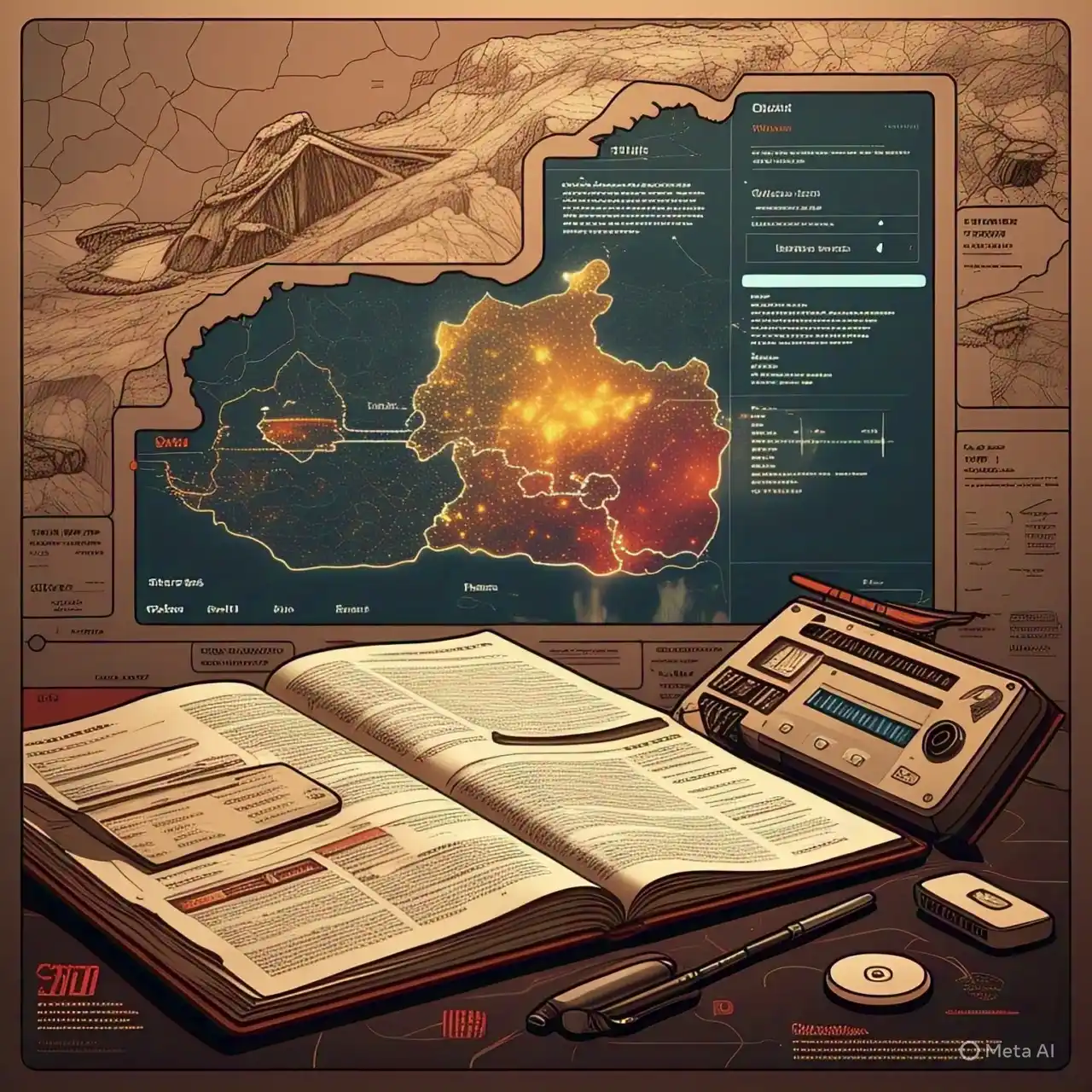
Introduction to the Boddington Gold Mine and Its Significance
The Boddington Gold Mine, situated 130 km southeast of Perth in Western Australia, is a cornerstone of Australia’s mining industry and a global leader in gold and copper production. Owned and operated by Newmont Corporation, it holds the distinction of being Australia’s largest gold mine, with proven reserves exceeding 11 million ounces of gold and 1.29 billion pounds of copper as of 2021. Since its reopening in 2009 after a major expansion, Boddington has consistently produced over 700,000 ounces of gold annually, contributing significantly to Australia’s position as a top global gold producer.
Geological Setting
The Boddington Gold Mine is located within the northern part of the Saddleback Greenstone Belt (SGB), a fault-bounded Archaean greenstone sequence in the southwestern corner of the Yilgarn Craton, Western Australia. The SGB comprises a complex assemblage of volcanic, volcaniclastic, and intrusive rocks that have undergone significant deformation and metamorphism. The belt includes basaltic, intermediate, and felsic volcanic lithologies interlayered with sedimentary units, with dacitic and andesitic rocks hosting much of the mineralization.
Key geological features include:
- Tectonic Setting: The region is characterized by steeply dipping sequences that have been extensively faulted. A major NW-trending shear zone along the western margin of the mineralization plays a critical role in ore deposition.
- Metamorphic Grade: Rocks in the area have been metamorphosed to greenschist to lower amphibolite facies.
- Hydrothermal Alteration: Mineralization is associated with quartz veins and shear zones formed during late-stage tectonic faulting and hydrothermal activity around 2.6 billion years ago.
- Regolith Profile: The deposit lies beneath a deeply weathered regolith profile, including saprolite, ferruginous duricrust, and bauxite zones.
Mineralization Model
The Boddington deposit aligns with a Reduced Intrusion-Related Gold System (RIRGS) model. This type of system is characterized by spatial and genetic links to intermediate to felsic intrusions with reduced oxidation states. Key aspects of this model at Boddington include:
Intrusive Associations:
Mineralization is genetically linked to subvolcanic intrusions emplaced during late tectonic events (approximately 2611 Ma). These intrusions likely provided thermal energy to drive hydrothermal fluid circulation rather than being direct sources of ore fluids.
Structural Controls:
Gold-copper mineralization is structurally controlled by D4 faults and shear zones, which served as conduits for auriferous hydrothermal fluids. These structures were active during late tectonic movements.
Ore Characteristics:
The deposit contains gold-copper ± molybdenum ± tungsten mineralization associated with quartz veins and disseminations within altered host rocks. It shares similarities with other RIRGS deposits like Homestake (USA) and Giant Mine (Canada).
Comparison to Other Deposits:
The timing and structural setting of Boddington are analogous to other late-stage gold deposits in the Yilgarn Craton, such as Mount Magnet and Wiluna.
Rediscovering the Boddington Deposit: A Mineral Systems Approach Applied to Unstructured Textual Data
In an earlier post, we explored how unstructured open file mining data is often overlooked — not because it lacks value, but because it's difficult to process at scale. WAMEX, Western Australia’s open file archive, holds decades of exploration and relinquishment reports, rich with observations and insights from generations of geologists.
What if we could apply a mineral systems approach to this text? Instead of structured geophysical or geochemical data, we use unstructured text to identify the conceptual fingerprints of a deposit — the kinds of rocks, alteration, structures, and geochemical associations that hint at something bigger.
In this case, we define a text pattern based on the known characteristics of the Boddington gold deposit and search for similar language within WAMEX. By limiting the search to reports written before Boddington’s discovery was public, we simulate how a geologist at the time might have inferred a RIRGS-style system purely from field reports and descriptions.
If the model can surface the Boddington area using only this approach, it suggests we can apply the same method globally — generating mineral potential maps from unstructured open file datasets, guided by the language of mineral systems.
Text Model for Boddington
A Mineral Systems Approach for Unstructured Textual Data
To identify the Boddington Gold Deposit within unstructured exploration reports, we define a text-based geological signature aligned with the mineral systems framework. Boddington is best described as a gold-copper porphyry system with intrusion-related characteristics, situated in the Archean Saddleback Greenstone Belt of Western Australia.
1. Source of Metals and Fluids
- Intrusion association:
The system is linked to a granodiorite–tonalite intrusive complex, which acted as the magmatic and hydrothermal source for mineralizing fluids. - High-temperature trace elements:
- Molybdenum (molybdenite)
- Bismuth (bismuthinite, native bismuth)
- Tellurium (tellurides)
These pathfinders are common in high-temperature Au-Cu systems and indicate metal-rich fluids from an evolved magmatic source.
2. Transport Pathways
- Structures and fluid conduits:
- Shear zones and fractures facilitated the movement of hydrothermal fluids.
- Structural overprinting and reactivation provided repeated fluid flow, a key feature in metal transport and deposition.
3. Traps (Deposition Mechanisms)
- Hydrothermal alteration zones:
- Potassic alteration (e.g., biotite ± magnetite): Indicates proximity to heat source and metal deposition.
- Sericite alteration: Common in gold systems, indicative of fluid-rock interaction.
- Magnetite alteration: Suggests Fe-rich fluids typical of porphyry systems.
- Rock competency contrasts:
The transition between volcaniclastics and intrusive rocks, combined with shearing, creates physical and chemical traps.
4. Host Rocks
- Lithological setting:
- Felsic to intermediate volcaniclastics, andesite, dacite, and intrusive rocks (tonalite-granodiorite).
- Part of the Archean Saddleback Greenstone Belt — relevant for regional exploration analogs.
5. Preservation and Overprinting
- Disseminated and vein-hosted mineralization:
- Gold and copper occur as disseminated sulfides and in quartz-stockwork veins, consistent with porphyry-style systems.
- Mineral assemblage includes pyrite, chalcopyrite, bornite, and arsenopyrite, with local free gold.
By structuring the Boddington text model this way, we can develop natural language filters that mimic how a geologist would scan reports for mineral system indicators — even before the deposit was discovered. This enables scalable prediction of similar systems across unstructured open file datasets.
Here is the Minerals Systems Approach text signature compatible with RadiXplore:
🔑 Unlock the hidden geological signature
Gain access to exclusive insights that could guide your next big discovery.
👉 Get the detailsRewinding to 1990: Predicting the Boddington Deposit Using Textual Mineral System Signatures
To evaluate the effectiveness of our mineral systems-based text signature, we applied it to Western Australia's WAMEX open file reports dated prior to 1990—before the full significance of the Boddington deposit was widely recognized. Using RadiXplore’s Year Filter, we isolated and analyzed reports that potentially describe reduced intrusion-related gold systems without the benefit of hindsight.
By mapping the locations of positive matches against historical tenement boundaries, we generated a text-derived prospectivity heat map. As shown in the image, the region around Boddington clearly lights up—indicating that our model successfully surfaced relevant mineral system indicators in pre-discovery data
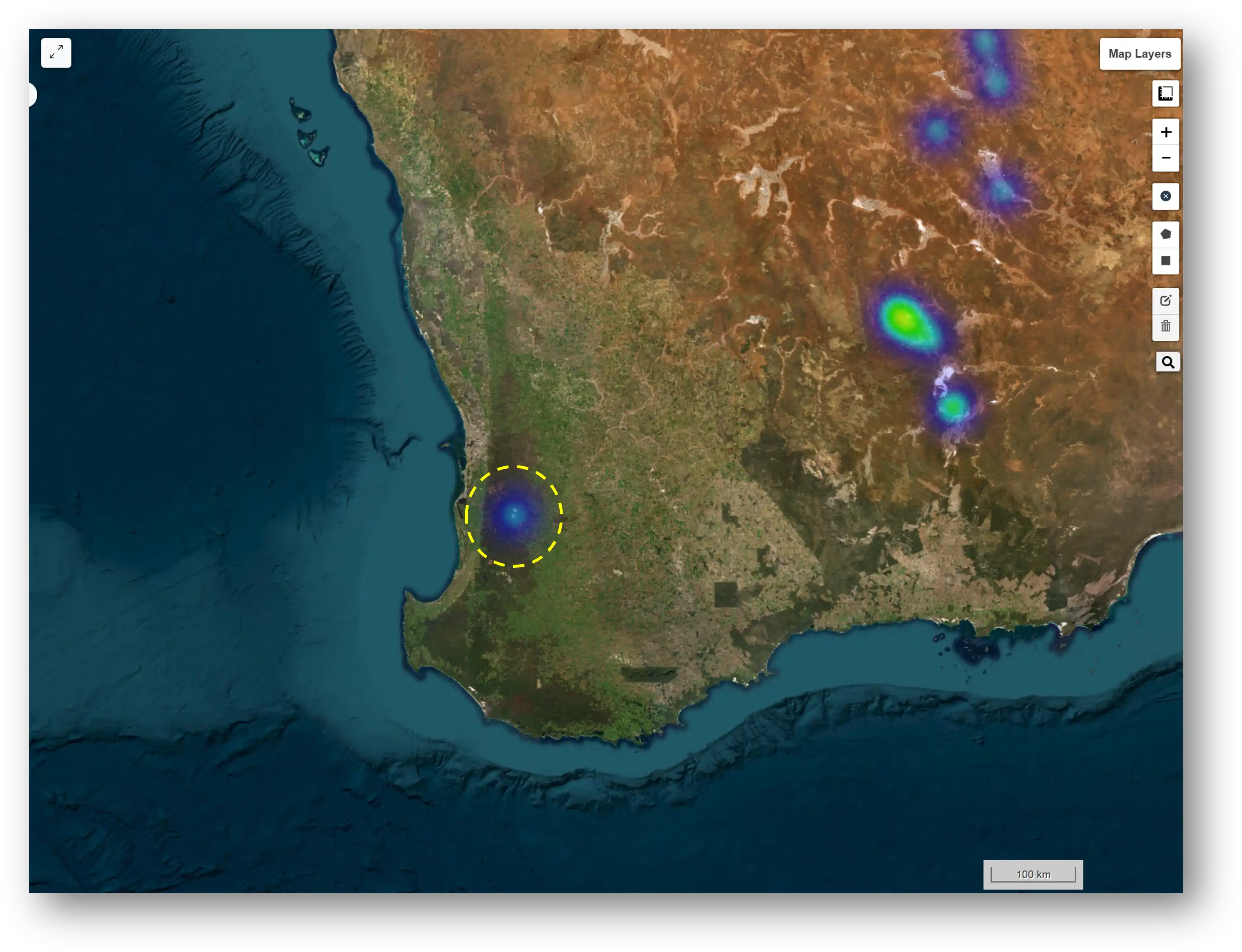
This is one of the reports which contributed to the positive hit over Boddington
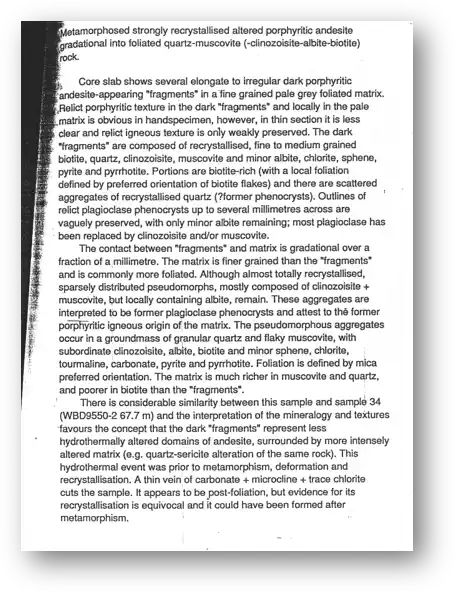
Finding the Next Boddington: Applying the Signature Across Time
With the text signature validated against the known Boddington deposit, the next step is to search for undiscovered or overlooked analogues. To do this, we remove the year filter—shifting from a retrospective calibration to a forward-looking discovery mode.
While exploration methods, technologies, and personnel may change over decades, one constant remains: the geology, carefully described by tens of thousands of geologists in these reports. By applying the Boddington-style mineral systems signature across all WAMEX reports, we aim to surface geological patterns similar to Boddington that may have gone unrecognized at the time.
Without the date constraint, RadiXplore identifies 252 hits across the WAMEX dataset. The resulting prospectivity heat map reveals where these potential analogues are located.
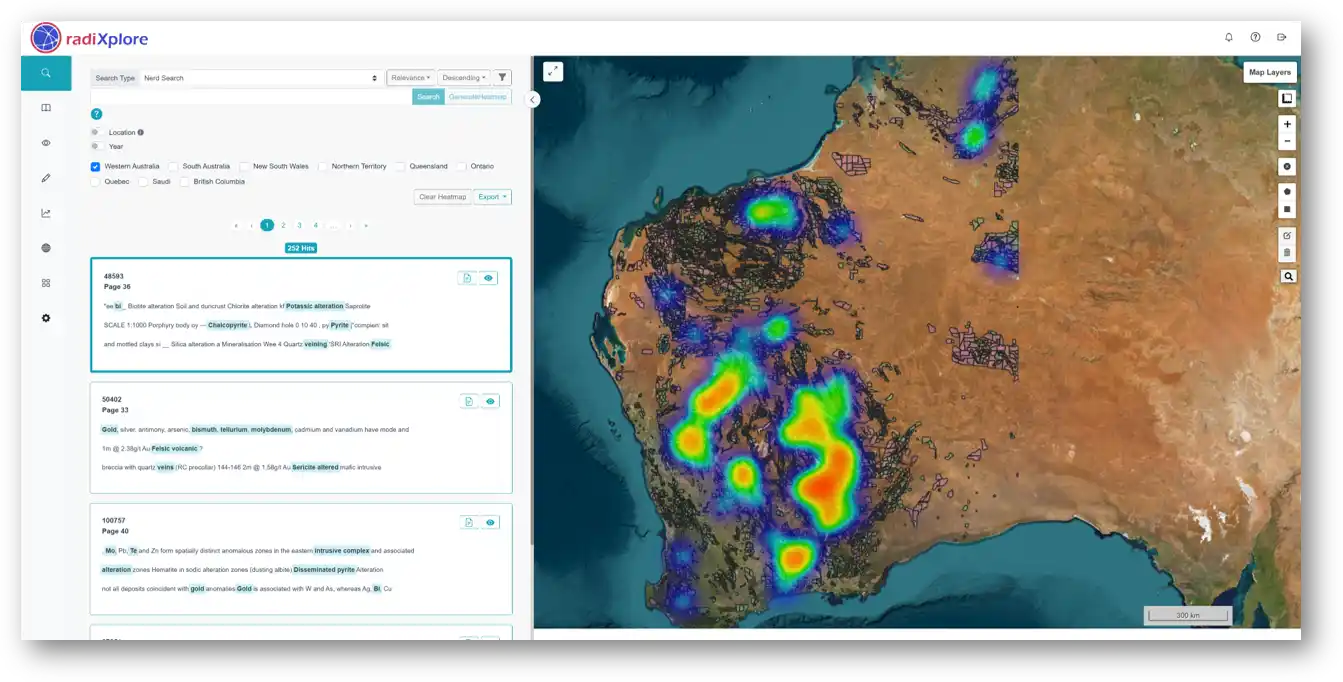
Side Note - So What if the Heat Map Overlaps Existing Tenements?
At first glance, it might seem discouraging that many of the 252 hits from our Boddington-style text signature fall within current exploration tenements in Western Australia. Does this mean we’ve found nothing new?
Not at all. In fact, this overlap offers several important insights:
- Model Validation
The alignment with current tenements suggests that our mineral systems-based text signature is highlighting areas that today’s explorers already deem geologically interesting. This reinforces the predictive power of the model. - Unrecognized Potential
Just because ground is held doesn’t mean it’s being explored for the right deposit style. Many tenements are underexplored or were staked for different commodities. Our approach could reveal hidden mineral systems that haven’t been properly tested. - Strategic Opportunity
These hits open the door for data-backed partnerships, joint ventures, or targeted farm-in discussions. If a tenement holder isn't actively exploring for reduced intrusion-related gold systems, our insights provide a compelling new angle. - Reinterpretation of Legacy Ground
Some "current" tenements may lie over historically relinquished areas or have changed hands multiple times. This suggests the possibility of missed opportunities or exploration fatigue—both prime situations for applying a novel AI-driven approach.
Ultimately, this isn't just about finding untouched ground—it's about unlocking the hidden value in datasets that tens of thousands of geologists have contributed to over decades. And with the right tools, what was once overlooked can become tomorrow’s discovery.
What Do the Hits Actually Tell Us? Prioritizing with RadiXplore Analytics
To move beyond the map and into actionable insights, we analyzed the top 100 reports from the 252 Boddington-style hits using RadiXplore’s built-in analytics engine. This helps us prioritize where to start digging deeper.
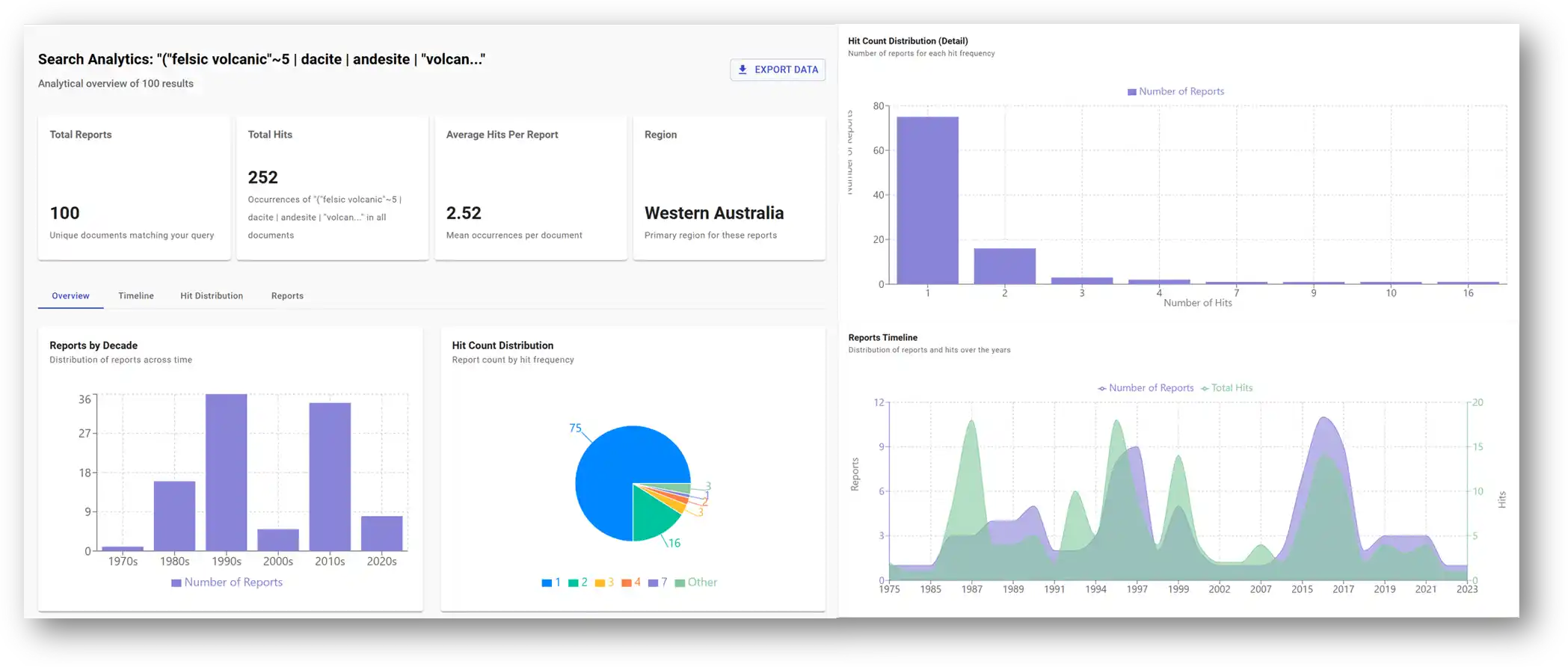
Here’s what the data reveals:
1. Exploration Activity Mirrors Boddington’s Development Timeline
When we chart the frequency of keyword hits and report submissions over time, distinct peaks emerge—each aligning with major phases in the history of the Boddington deposit:
- Late 1980s–1990s: Exploration activity surged shortly after the original Boddington mine opened in 1987. As it grew into Australia’s largest gold producer, interest in similar gold-copper porphyry systems spiked.
- Mid-2010s: Another peak follows the mine’s 2009–2010 expansion into deeper basement-hosted mineralization. This appears to have reignited industry interest in Boddington-style geology—particularly in felsic/intermediate volcanic settings.
These time-aligned spikes validate the geological relevance of our text signature and provide context for interpreting the hits.
2. Not All Reports Are Equal—Some Deserve Immediate Attention
Out of the top 100 reports:
- Around 75 contain only a single keyword hit, which is common given the broad geological terms used in the signature.
- One standout report contains 16 hits—a strong signal that it may describe a system geologically analogous to Boddington. This report should be our top priority for follow-up.
- Reports with 2–7 hits form the next tier and are also promising candidates for detailed review.
RadiXplore’s ability to rank relevance by hit density allows us to zero in on the most compelling opportunities without combing through hundreds of reports manually.
3. Recent Report Drop-Off Likely Due to Confidentiality Periods
The decline in report numbers and keyword matches in the 2020s likely doesn’t reflect reduced exploration activity—but rather a lag in public release due to WAMEX confidentiality rules. This means new data is still hidden, reinforcing the value of historical exploration records in surfacing missed or underappreciated targets.
Deep Dive into the Report with 16 Hits
One of the most significant outputs from RadiXplore's analysis is a report containing 16 keyword hits—far more than any other in the dataset. Upon inspection, one of these hits leads us to a detailed drill log, which we’ve examined closely to assess its potential as a Boddington-style analogue.
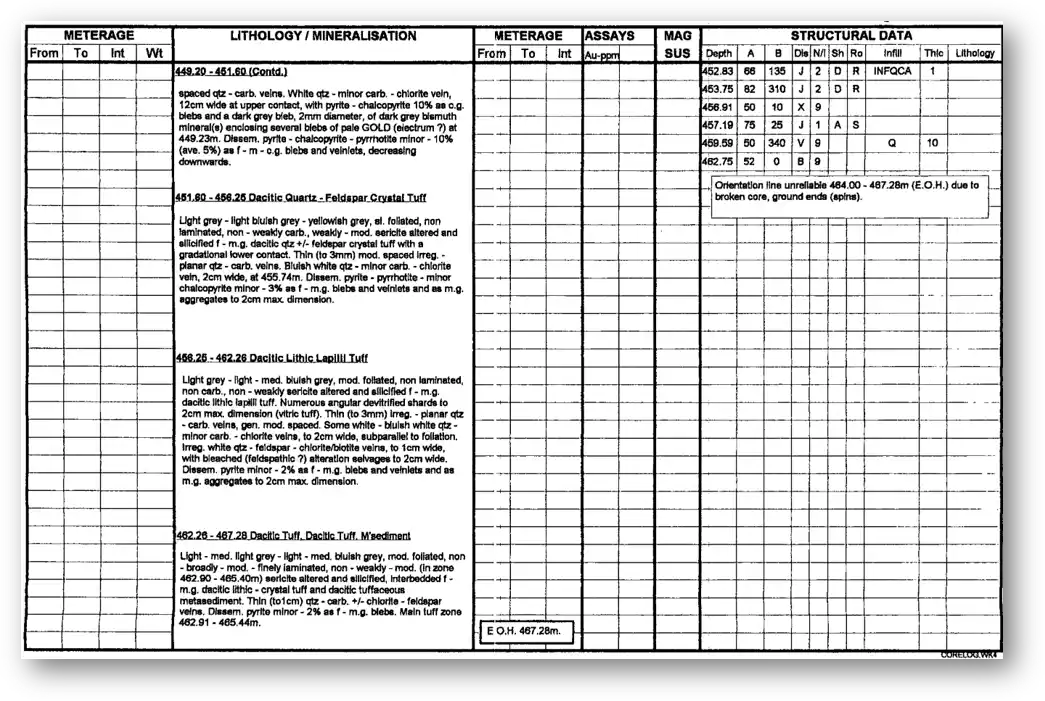
Drill Interval Summary
The highlighted interval spans from 449.20 m to 467.28 m and is logged primarily within Dacitic Tuff and associated volcanic rocks. Below are the key features that relate to a Boddington-style system:
1. Lithology
The logged rocks include:
- Dacitic Tuff
- Dacitic Quartz-Feldspar Crystal Tuff
- Dacitic Lithic Lapilli Tuff
- Interbedded Metasediments
These lithologies align with Boddington’s host environment, which is characterized by intermediate volcanic and intrusive rocks (e.g., diorite-andesite-dacite). The presence of dacitic volcaniclastics supports the possibility of a similar geologic setting.
2. Mineralization
Gold (Au):
Visible gold, described as "pale GOLD (electrum?)", is noted at 449.23 m—an unequivocal confirmation of gold mineralization within this interval.
Copper (Cu):
Chalcopyrite appears as disseminated blebs and veinlets (up to 10%, averaging 5%), and also in association with pyrite-pyrrhotite. This style and mineral association are consistent with Boddington’s disseminated Au-Cu sulfide mineralization.
Bismuth (Bi):
A "dark grey bleb... of dark grey bismuth mineral(s)" is noted enclosing gold blebs—highly significant. Bismuth is a hallmark geochemical signature at Boddington, often appearing as native bismuth or in tellurides. This observation reinforces the possible intrusive-related gold system nature of the target.
Tellurium (Te):
While not directly identified, the co-occurrence of gold and bismuth suggests tellurides could be present. In many intrusion-related systems, tellurium is closely associated with bismuth and gold.
Molybdenum (Mo):
Notably absent in this interval. As molybdenum (commonly as molybdenite) is a recoverable component at Boddington, its absence is worth noting—though zoning could explain its exclusion from this specific intercept.
Sulfides:
Pyrite and pyrrhotite are present as disseminated and veinlet forms, which matches the sulfide textures seen at Boddington.
3. Alteration and Veining
- Alteration: Weak to moderate sericitization and silicification are observed, along with carbonatization. These are all typical hydrothermal alterations associated with Au-Cu porphyry and IRGS (Intrusion-Related Gold System) environments.
- Veining: Quartz-carbonate ± chlorite ± feldspar/biotite veins are reported, mostly thin (up to 3 mm, some reaching 2 cm), irregular to planar, and moderately spaced. Alteration selvages around veins support the presence of a well-developed hydrothermal system.
4. Assay Values
Gold assays range from 50 to 135 ppm over narrow intervals (e.g., 0.66 m, 0.82 m). If these units are indeed ppm, they equate to exceptionally high grades (e.g., 135 g/t Au). While Boddington is generally a low-grade, bulk-tonnage deposit, it can contain localized high-grade pods. These high assays likely reflect vein-hosted mineralization or nuggety effects from visible gold.
Interpretation: Indicators of a Boddington-Style System?
Key Features Supporting the Analogy:
- Gold and copper mineralization, with chalcopyrite as the dominant copper phase
- Direct association of gold with bismuth—a key geochemical signature of Boddington
- Disseminated and veinlet sulfide textures consistent with bulk-tonnage styles
- Host rocks within the dacite–andesite spectrum
- Sericite, silica, and carbonate alteration consistent with known Au-Cu systems
Notable Differences or Gaps:
- Lack of molybdenum in this specific interval
- Extremely high gold grades over short widths, which are less representative of the widespread mineralization seen at Boddington
This drill log section exhibits multiple compelling features of a Boddington-style deposit. The presence of gold-copper-bismuth mineralization within a dacitic volcanic host, coupled with relevant hydrothermal alteration and sulfide textures, strongly suggests that the system shares critical traits with Boddington.
Although the absence of molybdenum and the narrow, high-grade nature of the intercept means this alone is not definitive evidence of a bulk-tonnage deposit, it clearly warrants further exploration. It’s possible this drill hole intersected a high-grade structure within a broader mineralized envelope—or that Mo-rich zones lie elsewhere in the system.
In summary, this report significantly strengthens the case for this area as a high-potential Boddington analogue and should be prioritized for additional targeting and drill testing.
From One Prospect to a Global Opportunity
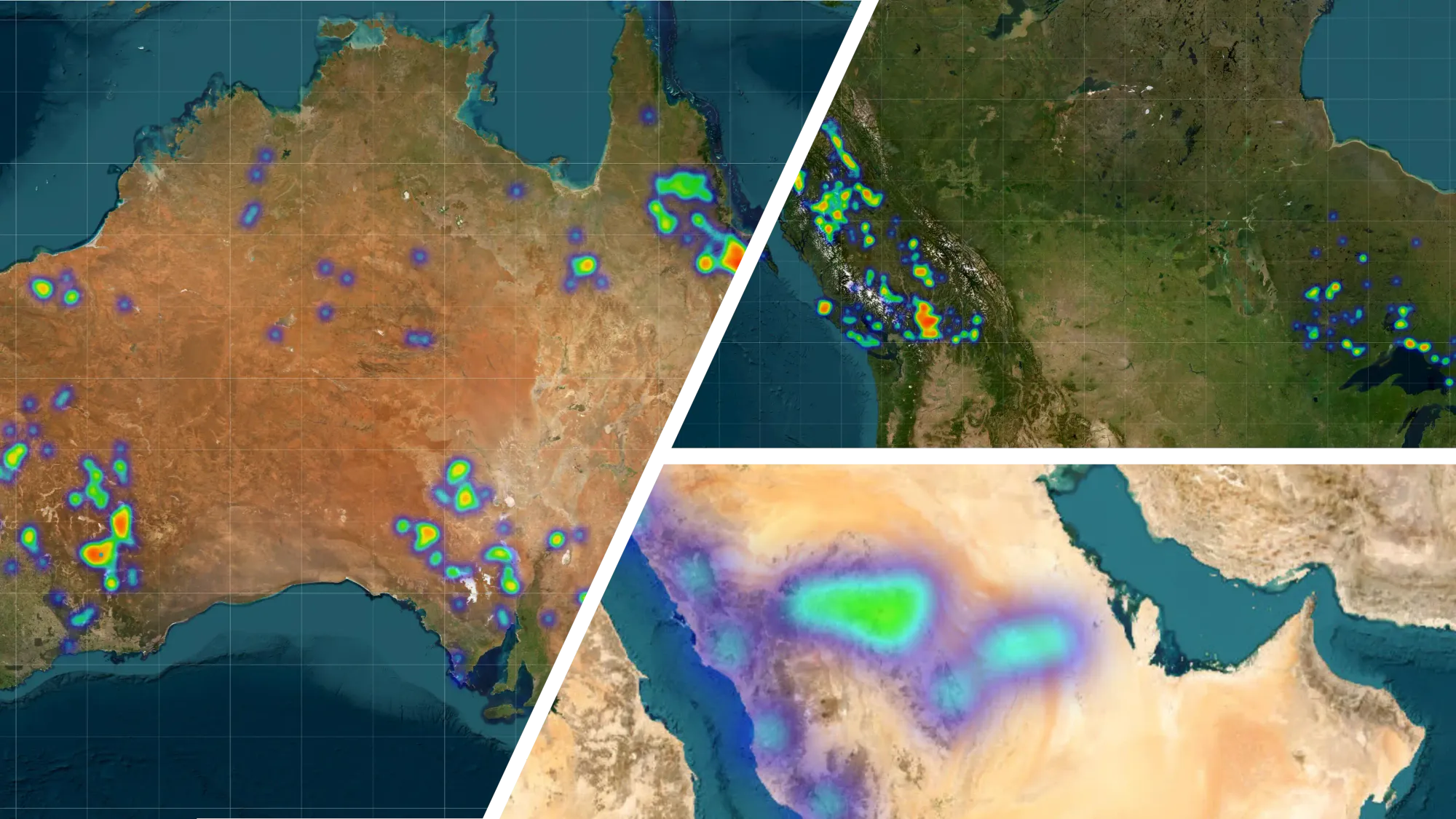
The drill log we examined is just one example—one hotspot in Western Australia—that shows strong indicators of a Boddington-style system. But it’s far from the only one. RadiXplore identified dozens of other hits across WA using the same approach, many of which remain unreviewed. And importantly, Boddington is just one of countless mineral systems that can be modeled in this way.
This method isn’t limited to a single deposit style or geography. The same AI-driven approach—guided by geological thinking—can be applied to unstructured exploration data globally. Whether it's porphyry copper in the Andes, IOCG systems in South Australia, or unconformity-type uranium in Canada’s Athabasca Basin, the potential is enormous. Anywhere historical reports, drill logs, and geological observations exist, we can surface overlooked analogues and revive old datasets with new context.
Across the world, thousands of technical reports sit in archives or digital silos—data that once informed exploration programs but was never fully mined for its strategic value. With tools like RadiXplore, this information doesn’t have to gather dust. Instead, it can be brought back to life, transformed into a discovery engine driven by AI and validated by geologists.
Ultimately, this is more than just a faster way to search. It’s a fundamentally new way to think about exploration: system-based, data-rich, and globally scalable. We're not just chasing deposits—we're reimagining how we find them.
Ready to See What You’re Missing?
If one overlooked drill log can reveal signs of a Boddington-style system, imagine what’s hidden across your entire dataset.
RadiXplore is built for geologists
to bring historical reports, logs, and notes back to life using AI trained specifically on mineral systems thinking.
🔍 Try it free
